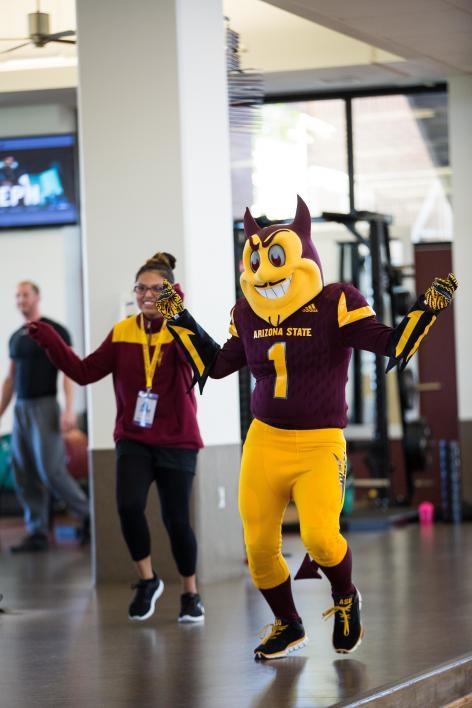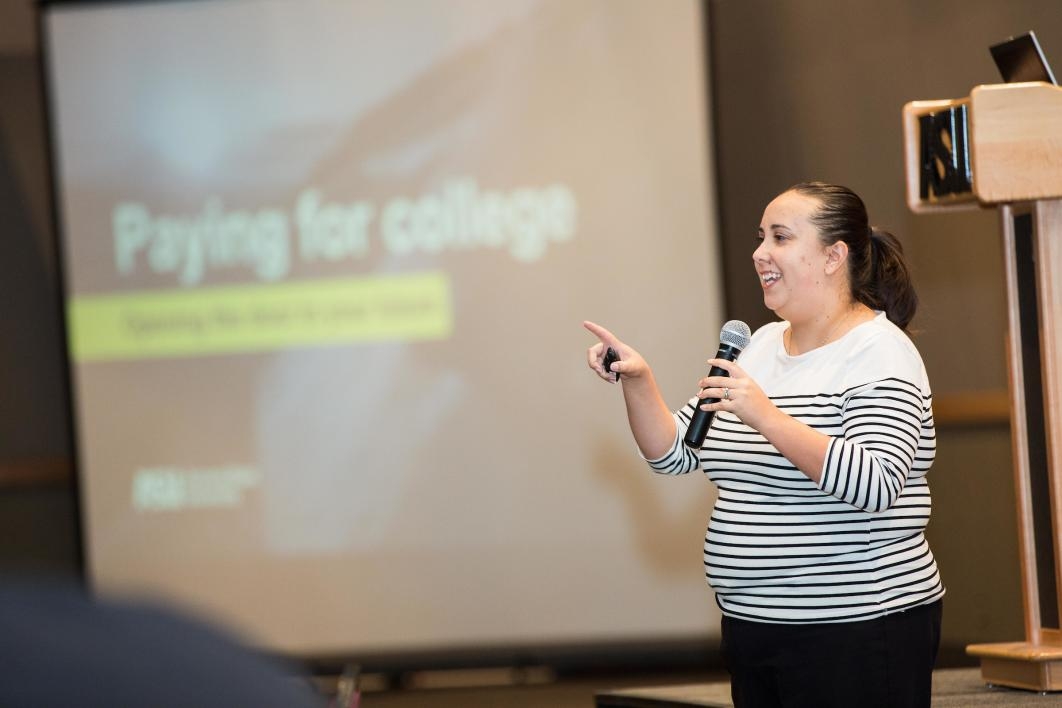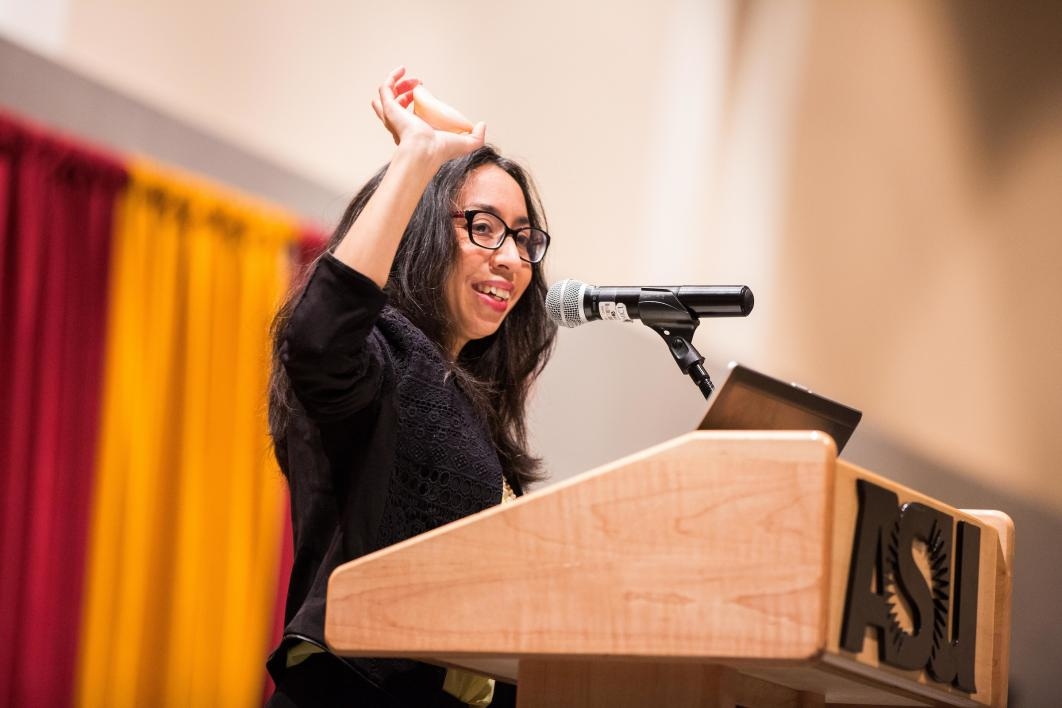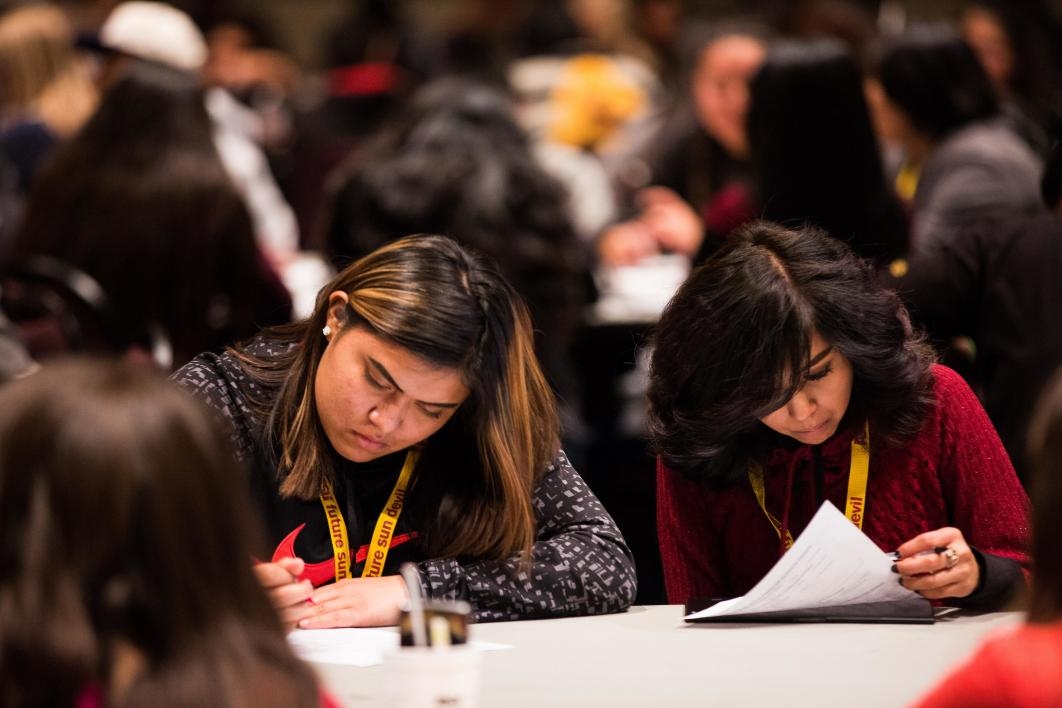ASU seeks to improve odds for future Native scholars

Statistically speaking, there’s a lot of room for improvement in the representation of American Indians in higher education: Such students make up less than 1 percent of all college students in the U.S., and only about 13 percent of all Natives have a college degree.
So ASU has made it a priority to improve those odds.
“Hearing those numbers only makes me more committed to my education,” said Holbrook High School junior Courtney Lee, a member of the Navajo Nation.
Lee traveled four hours by bus Wednesday with dozens of other students to attend the fifth annual RECHARGE conference at ASU’s West campus. The event drew nearly 500 Native students into a conversation about college readiness with topics ranging from financial aid and scholarships to wellness and careers.
Efforts to raise college enrollment among underrepresented groups are central to ASU’s goal of increasing the number of college graduates in Arizona.
ASU has sought to increase the number of American Indians on campus through specialized programs, including the SPIRIT orientation program, which helps Native students adjust to college life over a two-week period; INSPIRE, a one-week youth camp at ASU’s Polytechnic campus; and RECHARGE, which started in 2012 with 90 students.
Through these efforts, ASU has a growing Indian student body. Approximately 2,600 Native students attend ASU, which saw its largest graduating class of 362 in May.
The daylong conference, hosted by the Office of American Indian Initiatives and ASU Access, featured guest speakers, including former Congressman Matt Salmon, who became ASU’s vice president for government affairs in June, and Marisa Duarte, a professor in the School of Social Transformation and member of the Pascua Yaqui Tribe. It drew middle and high school students from around the state.
“Students need to see themselves on campus, but they also need to see other Native Americans in leadership, faculty and staff roles,” said Victor Begay, academic community liaison director. “When they see others in those roles, it helps them achieve academic comfort.”
One of those role models at the conference was Kate Rosier, executive director of the Indian Legal Program at the Sandra Day O’Connor College of Law at Arizona State University and a member of the Comanche Tribe. She made a plea for students to consider a career in law.
Rosier said there are 1.3 million attorneys in the U.S., but only about 2,600 are Native American.
“We’re the least represented group and yet most affected by the law because we fall under tribal, state and federal laws,” Rosier said. “Without proper representation, we have less of a voice than we should.”
Top photo: Students listen as a financial aid counselor explains options during the RECHARGE conference Wednesday. Photo by Deanna Dent/ASU Now





